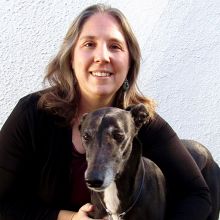
Chenoa Tremblay is a researcher who joined the SETI Institute in 2022 as a radio astronomer, working on the new Commensal Open-Source Multimode Interferometric Cluster (COSMIC) for the Jansky Very Large Array designed to complete an all-sky search for extraterrestrial intelligence. She also studies the chemistry of stars and what they can tell us about the motion of galaxies and the age and life cycles of different-sized stars.

Mark Ruzindana is a Postdoctoral Scholar at UC Berkeley doing research for the SETI institute. He is currently working on the National Radio Dynamic Zone (NRDZ) project at the Hat Creek Radio Observatory (HCRO), the Breakthrough Listen User Supplied Equipment (BLUSE) project at MeerKAT and the Commensal Open-Source Multimode Interferometric Cluster at the Very Large Array (VLA). He primarily develops, implements, and tests software and signal processing techniques for these projects.
SETI Talks are presented to our audience at no cost and are supported by contributions from supporters like you. If you are interested in sponsoring a future SETI Talks, please email us at development@seti.org .
This SETI Talks will be an online only and will not be live streamed on social media, please make sure to register for access to this event.
